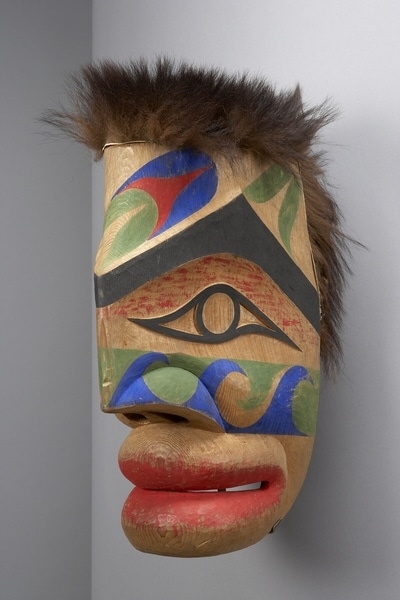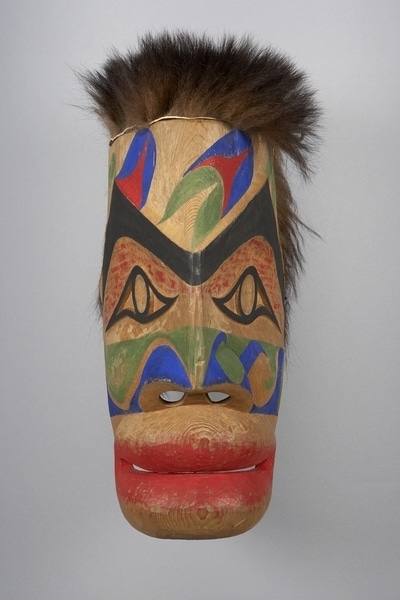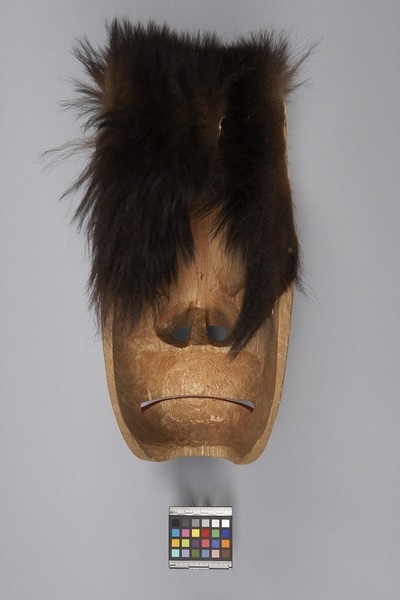Mask Item Number: Nb11.224 from the MOA: University of British Columbia




Description
Carved, wood mask with a triangular shape coming to a point at the bridge of the nose. Bear fur spans the top of the mask and extends halfway down the back opening. The slightly raised, heavy eyebrows are painted black, extending from the back edges of the mask and meet at the upper nose. The eyes, set in a shallow recess on the plane of the upper cheek, are long and drawn out with a circular centre. The nose is long and narrow, with back thrust nostrils. Lips, painted red are rounded and drawn back, slightly parted. U-form designs on the forehead are painted green, blue and red; eyes are outlined in black with a red broken-line sunlight design above them; wave-like designs on the cheek are painted green and blue.
History Of Use
This mask is of the type worn at the front of canoes coming into land for a potlatch. Songs were sung before the beaching of the canoe. The face of this mask is similar to the Nuu-chah-nulth 'buffoon mask'. The sharp planes of this mask were developed for the dances, where dancers would present their profiles to the audience, moving the head from one side to another.
Cultural Context
ceremonial
Iconographic Meaning
The u-forms on the forehead represent wind direction; the cheek designs represent the ocean surface (rollers on right: breakers on left); the broken up red area above the eyes represents sunlight.
Item History
- Made by Joe David (Maker) in Echachis, British Columbia, Canada between 1976 and 1977
- Owned by Joe David before April 14, 1977
- Received from Joe David (Seller) and Museum of Anthropology Donations Fund (Funding source) on April 14, 1977
What
Who
- Culture
- Nuu-chah-nulth: Tla-o-qui-aht
- Creator
- Joe David (Maker)
- Previous Owner
- Joe David
- Received from
- Joe David (Seller) and Museum of Anthropology Donations Fund (Funding source)
Where
- Holding Institution
- MOA: University of British Columbia
- Made in
- Echachis, British Columbia, Canada
When
- Creation Date
- between 1976 and 1977
- Ownership Date
- before April 14, 1977
- Acquisition Date
- on April 14, 1977
Other
- Condition
- good
- Current Location
- Case 10
- Accession Number
- 0381/0001